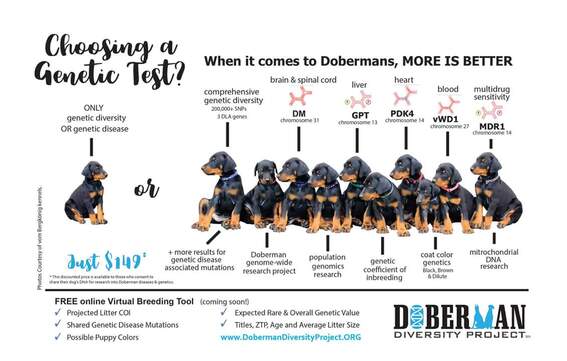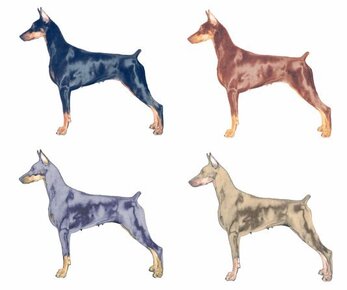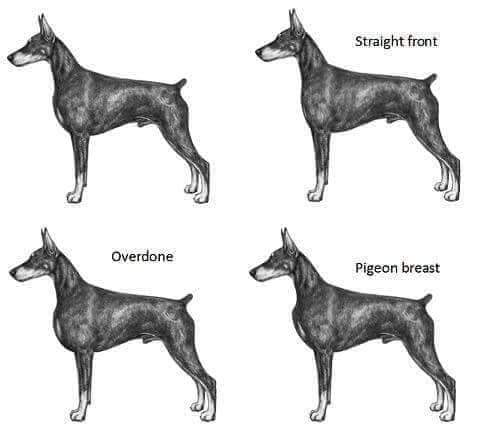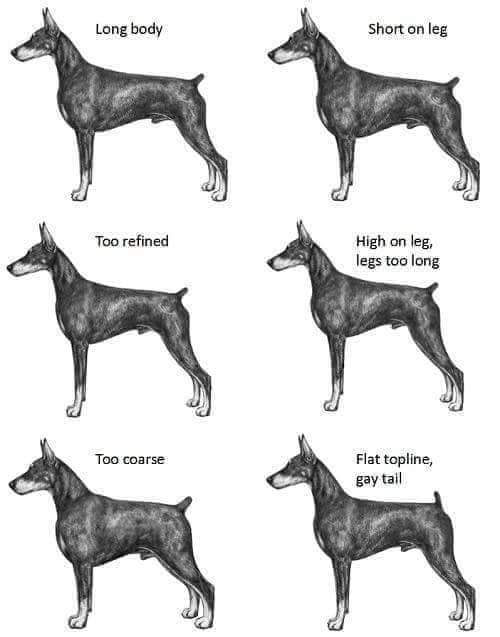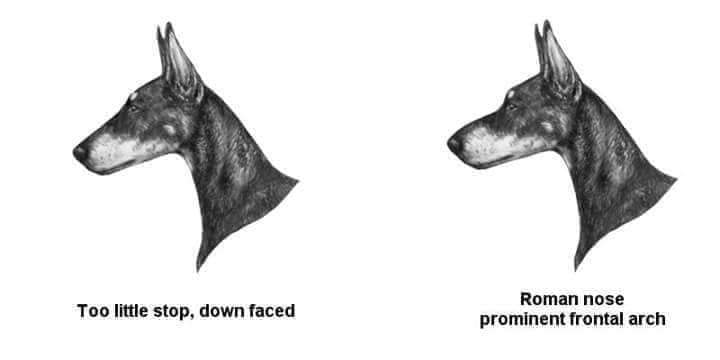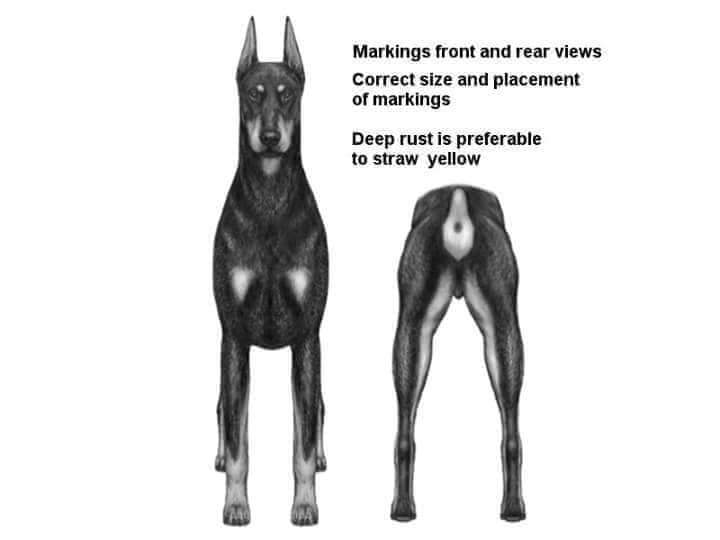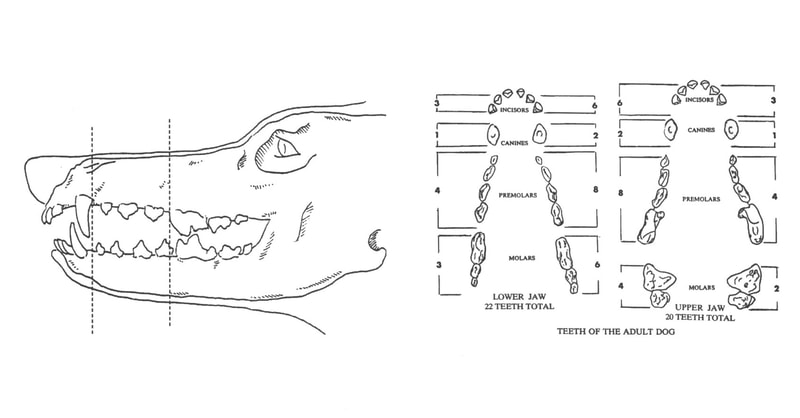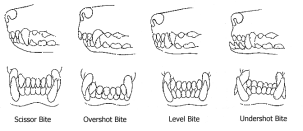Doberman and Health Testing
In today's age of technology testing has become as common place as a dog leash. There are many opinions on best breeding practices. Keep in mind breeding is as old as the modern human species and there is no rule book or 'must dos'. Every country has their own standard and history for breeding. In the USA there is quite the emphasis on genetic testing and hip/elbow scans. In places such as Europe the standard is to ensure the dog has had VWD and hips done. In other countries like Brazil and Mexico no testing is standard practice.
Testing can help prevent inheritable diseases like VWD, Narcolepsy and DINGS. Testing can not prevent disorders such as hip dysplasia, thyroid dysfunction, and DCM. Testing is not a guarantee for health and longevity. Testing is not a reliable method to predict a dog's daily health. Testing offers security against genetic disease and information about that dog's traits (such as color and what colors it may be able to produce in offspring). The health of a dog heavily depends on it's caretaker, diet (hydration, kibble fed, raw fed, wet food fed), exercise, body composition (overweight, underweight, inconsistent weight), environmental factors (yard sprays, air quality, terrain), medication regimen (flea treatment, supplements, dewormer, shampoos, coat sprays, clinically necessary medications), and so on.
Here at Jackson's Kennel we chose to focus on genetic health and the breed standard. We test our breeding dogs eyes, thyroids, hearts and hips. Our aim is to eliminate genetic mutations generation by generation through selective breeding our foundation females. In time we plan to have a line of males to pair to our females bred within our program, unrelated to our girls, so we can better know our lines and their heritable health. We are constantly taking shifts towards low COI (coefficient of inbreeding) litters and breeding dogs. This will take time as low COI Doberman are extremely rare. The breed average COI is high 40's and high 50's! For more information on the breed and its COI crisis please visit our page, DCM and the Doberman Crisis.
We proudly participate in various canine research projects including; Embark Vet, Better Bred, ICB's Citizen Scientist Program, the Doberman Diversity Project, Doberman Health Survey, the Dog Aging Project, The NHGRI Dog Genome Project, Darwin's Ark, UC Davis canine genetic material donations, PennHip/OFA, and more!
Testing can help prevent inheritable diseases like VWD, Narcolepsy and DINGS. Testing can not prevent disorders such as hip dysplasia, thyroid dysfunction, and DCM. Testing is not a guarantee for health and longevity. Testing is not a reliable method to predict a dog's daily health. Testing offers security against genetic disease and information about that dog's traits (such as color and what colors it may be able to produce in offspring). The health of a dog heavily depends on it's caretaker, diet (hydration, kibble fed, raw fed, wet food fed), exercise, body composition (overweight, underweight, inconsistent weight), environmental factors (yard sprays, air quality, terrain), medication regimen (flea treatment, supplements, dewormer, shampoos, coat sprays, clinically necessary medications), and so on.
Here at Jackson's Kennel we chose to focus on genetic health and the breed standard. We test our breeding dogs eyes, thyroids, hearts and hips. Our aim is to eliminate genetic mutations generation by generation through selective breeding our foundation females. In time we plan to have a line of males to pair to our females bred within our program, unrelated to our girls, so we can better know our lines and their heritable health. We are constantly taking shifts towards low COI (coefficient of inbreeding) litters and breeding dogs. This will take time as low COI Doberman are extremely rare. The breed average COI is high 40's and high 50's! For more information on the breed and its COI crisis please visit our page, DCM and the Doberman Crisis.
We proudly participate in various canine research projects including; Embark Vet, Better Bred, ICB's Citizen Scientist Program, the Doberman Diversity Project, Doberman Health Survey, the Dog Aging Project, The NHGRI Dog Genome Project, Darwin's Ark, UC Davis canine genetic material donations, PennHip/OFA, and more!
Awarded WagWalking.com's
Top Doberman Pinscher Breeder
for 2017 - 2023!
Top Doberman Pinscher Breeder
for 2017 - 2023!
| ||||||||
Making of a Master Breed
|
There is no dog like a Doberman, grace, power, and intelligence in one empathetic and loyal creature. The Doberman is truly man's best friend; loyal to a fault and willing to die for his master.
We have Karl Friedrich Louis Dobermann to praise for creating the the Doberman. When Mr. Dobermann passed away in 1894 his breed was trusted to and refined by Goswin Tischler and Otto Goeller. They built the breed image that would set the foundation for all Doberman standards. We can also thank two other men for bringing the breed to what it is today; Francis FH Fleitmann, Howard K. Mohr and George Earle III. Francis Fleitmann and Howard Mohr were the two Doberman breeders in America to that helped establish the breed and write the breed standard. They set the foundation and future vision for today's Doberman. George Earle III founded the Doberman Pinscher Club of America (DPCA) and helped promote the breed to become one of the most recognized and popular in the world. The Doberman was first recognized by the German Kennel Club in 1899, then by the AKC in 1908. The first Doberman to win a title was CH.Big Boy of White Gate (owner/breeder Howard K. Mohr) who won Best in Show in 1928. The first Doberman to win at the Westminster Kennel Club was Ch. Ferry v Raufelsen of Giralda (owner/breeder Mrs. M Hartley Dodge). By the 1940s the Doberman's appearance took on the likeness of dogs today. WW2 brought the Doberman to the United States of America as war dogs and police dogs, due to their ability to work. Doberman continued to excel in the AKC show ring and across Canada. By 1970 the dogs were gaining popularity and their registration numbers were on the rise. This is the timeline where I believe the split happened between "American" Doberman and "European" Doberman. Many breeders in the USA focused on certain characteristics to refine the look of the breed, and where many European breeders focused on the working aspects and on a large, bulkier structure. |
http://dobermansden.com/history-of-doberman-dogs-from-germany-to-worldwide/
https://books.google.com/books?id=oU5vTxkp8swC&pg=PT46&lpg=PT46&dq=doberman+history+manchester+terrier+disaster&source=bl&ots=il3DWVkCWw&sig=ACfU3U1VDftyvfKsnDIjUfK5exvmVSIKsA&hl=en&ppis=_e&sa=X&ved=2ahUKEwiqrMzu9-HoAhWVZs0KHb3yDegQ6AEwD3oECAwQKQ#v=onepage&q=doberman%20history%20manchester%20terrier%20disaster&f=false
http://dpca.org/BreedEd/masterminds/
https://chrisparriman1991.wordpress.com/
http://dpca.org/BreedEd/history-of-the-doberman-1897-2005/
http://dpcnc.org/about-the-breed/francis-frederick-herman-fleitmann-westphalia-kennels/
https://books.google.com/books?id=oU5vTxkp8swC&pg=PT46&lpg=PT46&dq=doberman+history+manchester+terrier+disaster&source=bl&ots=il3DWVkCWw&sig=ACfU3U1VDftyvfKsnDIjUfK5exvmVSIKsA&hl=en&ppis=_e&sa=X&ved=2ahUKEwiqrMzu9-HoAhWVZs0KHb3yDegQ6AEwD3oECAwQKQ#v=onepage&q=doberman%20history%20manchester%20terrier%20disaster&f=false
http://dpca.org/BreedEd/masterminds/
https://chrisparriman1991.wordpress.com/
http://dpca.org/BreedEd/history-of-the-doberman-1897-2005/
http://dpcnc.org/about-the-breed/francis-frederick-herman-fleitmann-westphalia-kennels/
American VS European
Looking at the standards we have for the breed today there is very little difference between the FCI (European) standard and the AKC (American) standard. Both standards describe a medium, muscular dog with elegance, grace and power.
The American Doberman is typically docked and cropped. Tail docking is performed between 2-5 days old, with the tail removed at the second joint. This is a form of alteration with risk of site infection and nerve damage. Cropping is a surgical procedure where the otter leather of the ear is cut away. The ears are cropped between 5 and 16 weeks, depending on the attending veterinarian. The dew claws are removed at the same time as tail docking or can be done when ears are cropped. Tail docking is best done when the dog is young and has an underdeveloped nervous system and a less sensitive pain awareness. Ear cropping is a surgical procedure and is painful. The ears will be tender and painful after surgery. Many vets prescribe pain medication to help ease the healing process. Puppies are back to playing and normal activity within 24 hours of their procedure. The European Doberman (often spelled Dobermann) is left "natural"; tail, dew claws and ears intact. Many are shipped to the USA or to a neighboring country that allows ear cropping and tail docking. Natural Doberman have a long slender tail that will curl slightly over their back. Their ears should lay flat and even with the jawline. Dew claws should be trimmed regularly to reduce the chance of them catching on things (which may lead to a broken joint, torn nail, ripped skin, and possibly the removal of the dew totally).
|
FCI Standard
SIZE: Height at withers: Males 68 – 72 cm./26.7-28.3, Bitches 63 – 68 cm./24.8-26.7in Weight: Males about 40 – 45 kg./88-99lbs, Bitches about 32 – 35 kg./70.5-77.1lbs GENERAL APPEARANCE: The Dobermann is of medium size, strong and muscularly built. Through the elegant lines of its body, its proud stature, and its expression of determination, it conforms to the ideal picture of dog. IMPORTANT PROPORTIONS: The body of the Dobermann appears to be almost square, particularly in males. The length of the body measured from the point of the shoulder to the point of the buttock shall not be more than 5% longer than the height from the withers to the ground in males, and 10% in females. BEHAVIOUR / TEMPERAMENT: The disposition of the Dobermann is friendly and calm; very devoted to the family it loves children. Medium temperament and medium sharpness (alertness) is desired. A medium threshold of irritation is required with a good contact to the owner. Easy to train, The Dobermann enjoys working, and shall have good working ability, courage and hardness. The particular values of self confidence and intrepidness are requied, and also adaptability and attention to fit the social environment. COLOUR: The colour is black or brown, with rust red clearly defined and clean markings. Markings on the muzzle, as a spot on the cheeks and the top of the eyebrow, on the throat, two spots on the forechest, on the metacarpus, metatarsus and feet, on the inside of the back thigh, on the arms and below the tail. FAULTS: Any departure from the foregoing points should be considered a fault and the seriousness with which the fault should be regarded should be in exact proportion to its degree and its effect upon the health and welfare of the dog. General Appearance: Reversal of sexual impression; little substance; too light; too heavy; too leggy; weak bones. Head: Too heavy, too narrow, too short, too long, too much or too little stop; Roman nose, bad slope of the top line of the skull; weak underjaw; round or slit eyes; light eye; cheeks too heavy; loose flews; eyes too open or too deepset; ear set too high or too low; open mouth angle. Neck: Slightly short; too short; loose skin around the throat; dewlap; too long (not in harmony); ewe neck. Body: Black not tight; sloping croup; sway back; roach back; insufficient or too much spring of rib; insufficient depth or width of chest; back too long overall; too little forechest; tail set too high or too low; too little or too much tuck up. Limbs: Too little or too much angulation front or hindquarters; loose elbow; deviations from the standard position and length of bones and joints; feet too close together or too wide apart; cow-hocks, spread hocks, close hocks; open or soft paws, crooked toes; pale nails. Coat: Markings too light or not sharply defined; smudged markings; mask too dark; big black spot on the legs; chest markings hardly visible or too large; hair long, soft, curly or dull. Thin coat; bald patches; large tufts of hair particularly on the body; visible undercoat. Character: Inadequate self confidence; temperament too high; sharpness too high; too high or too low a threshold of irritation. Size: Deviation of size up to two centimetres from the standard should result in a lowering of the quality grading. Gait: Wobbly; restricted or stiff gait; pacing.
|
AKC Standard
SIZE: Height: 26-28 inches (male), 24-26 inches (female) Weight: 75-100 pounds (male), 60-90 pounds (female) General Appearance: The appearance is that of a dog of medium size, with a body that is square. Compactly built, muscular and powerful, for great endurance and speed. Elegant in appearance, of proud carriage, reflecting great nobility and temperament. Energetic, watchful, determined, alert, fearless, loyal and obedient. Size, Proportion, Substance: Height at the withers: Dogs 26 to 28 inches, ideal about 27½ inches; Bitches 24 to 26 inches, ideal about 25½ inches. The height, measured vertically from the ground to the highest point of the withers, equaling the length measured horizontally from the forechest to the rear projection of the upper thigh. Length of head, neck and legs in proportion to length and depth of body. Head: Long and dry, resembling a blunt wedge in both frontal and profile views. When seen from the front, the head widens gradually toward the base of the ears in a practically unbroken line. Eyes almond shaped, moderately deep set, with vigorous, energetic expression. Iris, of uniform color, ranging from medium to darkest brown in black dogs; in reds, blues, and fawns the color of the iris blends with that of the markings, the darkest shade being preferable in every case. Ears normally cropped and carried erect. Top of skull flat, turning with slight stop to bridge of muzzle, with muzzle line extending parallel to top line of skull. Cheeks flat and muscular. Nose solid black on black dogs, dark brown on red ones, dark gray on blue ones, dark tan on fawns. Lips lying close to jaws. Jaws full and powerful, well filled under the eyes. Teeth strongly developed and white. Lower incisors upright and touching inside of upper incisors a true scissors bite. 42 correctly placed teeth, 22 in the lower, 20 in the upper jaw. Distemper teeth shall not be penalized. Neck, Topline, Body: Neck proudly carried, well muscled and dry. Well arched, with nape of neck widening gradually toward body. Length of neck proportioned to body and head. Withers pronounced and forming the highest point of the body. Back short, firm, of sufficient width, and muscular at the loins, extending in a straight line from withers to the slightly rounded croup. Chest broad with forechest well defined. Ribs well sprung from the spine, but flattened in lower end to permit elbow clearance. Brisket reaching deep to the elbow. Belly well tucked up, extending in a curved line from the brisket. Loins wide and muscled. Hips broad and in proportion to body, breadth of hips being approximately equal to breadth of body at rib cage and shoulders. Tail docked at approximately second joint, appears to be a continuation of the spine, and is carried only slightly above the horizontal when the dog is alert. Coat: Smooth-haired, short, hard, thick and close lying. Invisible gray undercoat on neck permissible. Color and Markings: Allowed Colors-Black, red, blue, and fawn (Isabella). Markings-Rust, sharply defined, appearing above each eye and on muzzle, throat and forechest, on all legs and feet, and below tail. White patch on chest, not exceeding ½ square inch, permissible. Temperament: Energetic, watchful, determined, alert, fearless, loyal and obedient. The judge shall dismiss from the ring any shy or vicious Doberman. Shyness-A dog shall be judged fundamentally shy if, refusing to stand for examination, it shrinks away from the judge; if it fears an approach from the rear; if it shies at sudden and unusual noises to a marked degree. Gait: Free, balanced, and vigorous, with good reach in the forequarters and good driving power in the hindquarters. When trotting, there is strong rear-action drive. Each rear leg moves in line with the foreleg on the same side. Rear and front legs are thrown neither in nor out. Back remains strong and firm. When moving at a fast trot, a properly built dog will single-track. Faults: The foregoing description is that of the ideal Doberman Pinscher. Any deviation from the above described dog must be penalized to the extent of the deviation. Disqualifications: Overshot more than 3/16 of an inch, undershot more than ⅛ of an inch. Four or more missing teeth. Dogs not of an allowed color. | ||||||||||||
Many people seek out a European Doberman for a large, heavy structured dog with "protection" abilities. They are actually seeking out a dog that is out of standard with poor temperament, ones that display aggression and reactiveness. A true European Doberman should not be reactive or aggressive, rather he should be alert and protective. Often a reactive and aggressive dog is mislabeled as protective. Many European Doberman are large, squared headed, lippy often seen with drool foam around the mouth, and massive paws; these dogs are not bred to standard and often have health issues (joint and heart). No Doberman should be excessive large or blocky!
Many European Doberman come from lines that lean heavily towards high drive and anxiety/timidness. Those dogs can be difficult to raise and to keep stimulated. If the dog comes from a certified/titled working line there are lots to consider. A working line Doberman is not fit for a companion home; it will need a job to do and to be heavily exercised. Working Doberman have certain traits that they have been bred for and are for the utmost experienced dog handlers. A working line puppy will not be a simple companion pet. It will need tasks to do and may not be as sociable as a companion line. Please note, American working line Doberman can be just as timid and hard to handle. A working dog is not for the average home!
When looking for a Doberman look at the pedigree. Study the lines and be prepared for what may be to come; hereditary conditions, average lifespan, and what drive your puppy may inherit. A true Doberman will fit on or both of the standards above. Don't ever buy a Doberman purely for size or color. A Doberman is a Doberman, the American and European Doberman are genetically the same breed. "This study confirmed that Doberman from around the world constitute a single breed. However, there is evidence that a genetically distinguishable subpopulation (bloodline) of Doberman is evolving in Australia. The Doberman originated from a common founder population that appears to be relatively small and this has undoubtedly been compounded by artificial genetic bottlenecks that have occurred since the breed was closed to outside blood. " Buy a Doberman from an experienced and knowledgeable breeder who health tests and is transparent with you. Buy from a line bred for longevity and health, a line bred to the standard and for the betterment of the breed. Doberman are a wonderful breed and when bred right they are loyal, social but aloof with strangers, protective and intelligent.
Many European Doberman come from lines that lean heavily towards high drive and anxiety/timidness. Those dogs can be difficult to raise and to keep stimulated. If the dog comes from a certified/titled working line there are lots to consider. A working line Doberman is not fit for a companion home; it will need a job to do and to be heavily exercised. Working Doberman have certain traits that they have been bred for and are for the utmost experienced dog handlers. A working line puppy will not be a simple companion pet. It will need tasks to do and may not be as sociable as a companion line. Please note, American working line Doberman can be just as timid and hard to handle. A working dog is not for the average home!
When looking for a Doberman look at the pedigree. Study the lines and be prepared for what may be to come; hereditary conditions, average lifespan, and what drive your puppy may inherit. A true Doberman will fit on or both of the standards above. Don't ever buy a Doberman purely for size or color. A Doberman is a Doberman, the American and European Doberman are genetically the same breed. "This study confirmed that Doberman from around the world constitute a single breed. However, there is evidence that a genetically distinguishable subpopulation (bloodline) of Doberman is evolving in Australia. The Doberman originated from a common founder population that appears to be relatively small and this has undoubtedly been compounded by artificial genetic bottlenecks that have occurred since the breed was closed to outside blood. " Buy a Doberman from an experienced and knowledgeable breeder who health tests and is transparent with you. Buy from a line bred for longevity and health, a line bred to the standard and for the betterment of the breed. Doberman are a wonderful breed and when bred right they are loyal, social but aloof with strangers, protective and intelligent.
Judging the Doberman
Proudly powered by Weebly
